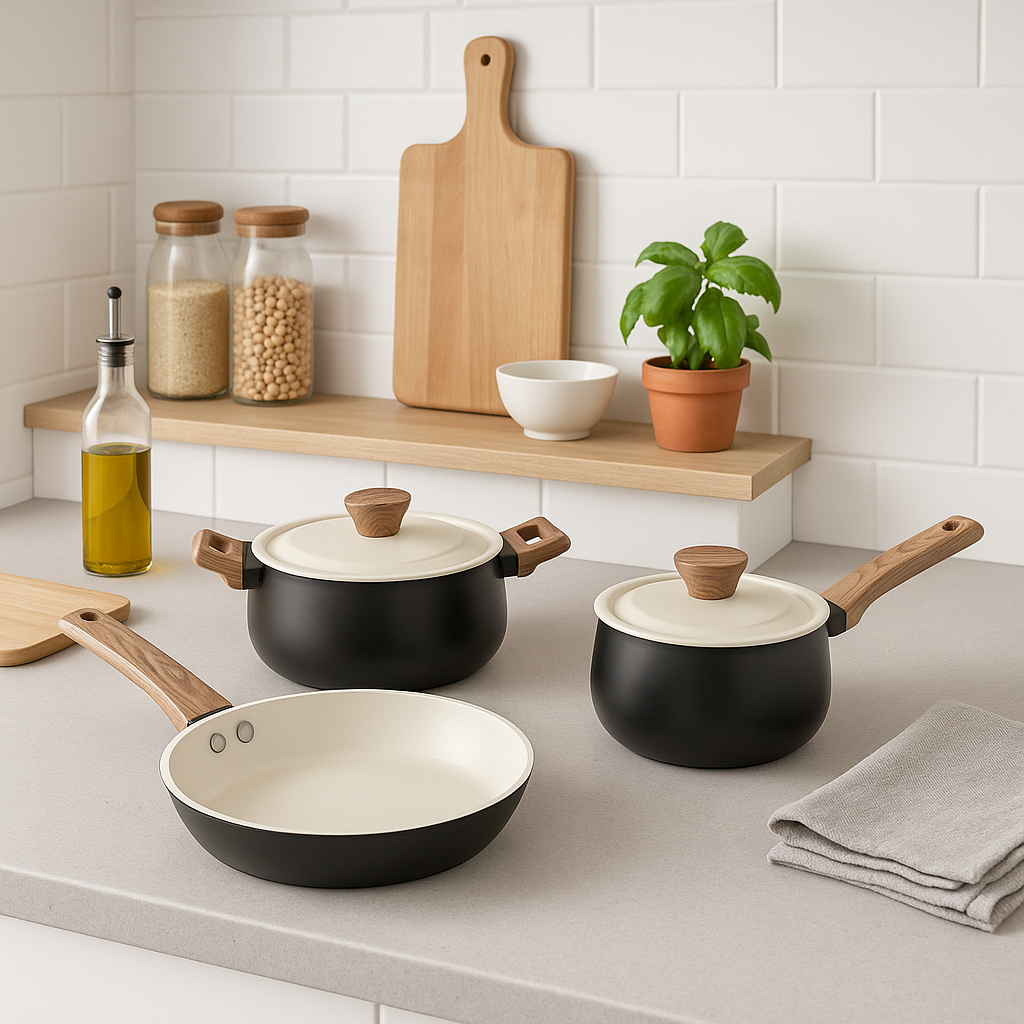Are Your Pots and Pans Still Safe for Daily Cooking?
May 15, 2025
Kitchen cookware is designed to withstand the rigors of daily cooking, but like all things, it has a lifespan. Over time, pots and pans can develop wear and tear, which may compromise their safety and effectiveness. For example, non-stick pans can lose their coating, cast iron can rust, and stainless steel can develop pits or scratches. These changes not only affect the performance of your cookware but can also introduce harmful substances into your food.
One of common issues with kitchen cookware is the degradation of non-stick coatings. While non-stick pans are incredibly convenient for healthy cooking, the coatings can break down over time, especially with high heat or improper cleaning. When this happens, small particles of the coating can flake off and mix with your food. This is not only unappetizing but can also pose health risks. Therefore, it is essential to regularly inspect your non-stick pans for signs of wear and replace them when necessary.

Signs Your Pots and Pans Need Replacing
Knowing when to replace your pots and pans is crucial for maintaining a safe and healthy kitchen. Here are some key signs that your kitchen cookware may no longer be safe for daily cooking:
1. Visible Damage: If you notice any cracks, chips, or peeling in your pots and pans, it is time to replace them. This is especially true for non-stick pans, where a damaged coating can release harmful substances into your food.
2. Rust and Corrosion: Rust is a common problem with metal cookware, particularly cast iron and stainless steel. If you see rust spots or signs of corrosion, it is good to replace the item. Rust can not only affect the taste of your food but can also pose health risks if ingested.
3. Warped or Bent: Over time, pots and pans can become warped or bent, especially if they are exposed to high heat for extended periods. Warped cookware does not heat evenly, which can cause uneven cooking and potential hot spots. This not only affects the quality of your food but can also be a safety hazard.
4. Old and Worn Handles: The handles of your pots and pans are just as important as the cookware itself. If the handles are loose, cracked, or show signs of wear, they can be dangerous to use. A handle that breaks while you are lifting a hot pan can result in burns or other injuries.
Choosing Safe and Healthy Cooking Pans
When it comes to replacing your pots and pans, it is important to choose cookware that is both safe and durable. Here are some tips for selecting healthy cooking pans:
1. Material Matters: Opt for high-quality materials such as stainless steel, cast iron, or ceramic. These materials are durable, safe, and do not release harmful substances into your food. Avoid cookware made from materials that can leach chemicals, such as certain types of aluminum or non-stick coatings that contain PFOA.
2. Non-Stick Options: If you prefer the convenience of non-stick pans, look for those with PFOA-free coatings. Modern non-stick coatings are safer and more durable than older versions. Always follow the manufacturer's instructions for care and use to prolong the life of your non-stick cookware.
3. Proper Fit and Function: Ensure that your pots and pans fit your stovetop properly and have handles that are securely attached. A good fit ensures even heat distribution, while secure handles make your cookware safer to use.
Maintaining Your Kitchen Cookware
Regular maintenance is key to extending the life of your pots and pans and ensuring they remain safe for daily cooking. Here are some tips for maintaining your kitchen cookware:
1. Clean Properly: Always clean your pots and pans according to the manufacturer's instructions. Avoid using abrasive cleaners or scrubbers that can damage the surface. For non-stick pans, use a soft sponge and mild detergent to prevent scratching the coating.
2. Store Correctly: Store your pots and pans in a cool, dry place. Avoid stacking heavy items on top of them, as this can cause warping or damage. Use protective covers or soft cloths to cushion your cookware during storage.
3.Inspect Regularly: Take a few minutes to inspect your pots and pans before each use. Look for signs of wear, damage, or rust. Address any issues promptly to prevent them from worsening.
4.Use Proper Cooking Techniques: Avoid overheating your pots and pans, as this can cause damage and reduce their lifespan. Use appropriate heat settings for your cookware and avoid sudden temperature changes, such as placing a hot pan in cold water.
 English
English русский
русский Français
Français Español
Español Português
Português عربى
عربى














